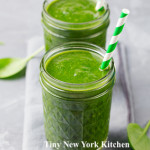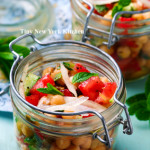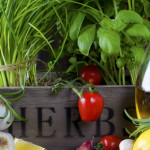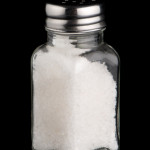Most of us have been stuck at home for months now watching everything we can find on Netflix. There’s nothing like getting comfy on the sofa with a bowl of popcorn and a good movie. You might want to get creative and give your movie nights a popcorn upgrade.
Italian Style
Toss popcorn with finely grated Parmesan, a sprinkling of Italian seasoning and red pepper flakes.
Asian Style
Drizzle lightly buttered popcorn with a small amount of sesame oil, then sprinkle with sesame seeds and crushed seaweed snacks.
Crabby Corn
Sprinkle buttered popcorn with Old Bay seasoning, salt, and a pinch of cayenne.
Tex Mex
Toss buttered popcorn with taco seasoning, garlic powder, and a pinch of chipotle chili powder.
Cinnamon Sugar
Toss hot popcorn in cinnamon sugar immediately after popping to create a kettle corn like crunch. Or combine sugar with a pinch of pumpkin pie spice and toss for pumpkin kettle corn.
Almond Joy
Toss popcorn with mini chocolate chips, coconut flakes and chopped roasted almonds.
Salted Caramel
Sprinkle hot buttered popcorn with turbinado sugar, crushed hard caramel candies, and salt.
©Tiny New York Kitchen © 2021 All Rights Reserved
Smoothies are loaded with healthy ingredients to help flood your body with nutrients.
“Work With What You Got!”
©Tiny New York Kitchen © 2020 All Rights Reserved
Eat better with tweaks to meals you and your family already love. Fuel up with more vegetables and plant-based protein swaps on your plate.
“Work With What You Got!”
©Tiny New York Kitchen © 2019 All Rights Reserved
Healthy snacks give your family the energy and nutrients they need throughout the day. As you plan snacks, think of them as “mini meals” that include two of the four food groups.
Try these simple nutritious snack ideas:
1. Whole grain crackers with a cheese stick
2. Fresh cut fruit with a yogurt dip
3. Nut-free trail mix. Mix dried cranberries, raisins, dried apricots, and apple rings with sunflower and pumpkin seeds, along with your family’s favorite cold cereal.
4. A small tortilla wrap spread with Greek yogurt, some jam and a banana.
5. A smoothie made with vanilla yogurt, blueberries, apples and some orange juice.
6. Vegetable sticks (like cucumbers and carrots) dipped in hummus.
Make snacks interesting by using a variety of shapes, colors, and textures.
• Offer different types of cheese (mozzarella, cheddar, Jack, Swiss) in different forms (cubes, strings, slices, and balls)
• Switch up the vegetables and fruit. Make sure you have a colorful variety in the fridge to choose from.
• Kids love to dip. Use cottage cheese, hummus, yogurt, or guacamole as healthy dips.
From planning to packing, get everyone in the family involved when making snacks. Take children grocery shopping and let them choose some of their favorite foods like breads, vegetables, fruit, and yogurts. Set aside time in the evening to pack lunches and snacks. You’ll be happy you did during the next day’s busy morning rush!
Food Allergies: Schools have different policies when it comes to food allergies. Many schools have a nut-free policy throughout the whole school, and some have policies just for some classrooms. Find out about the food allergy policy at your child’s school. Once you know about the foods that need to be avoided, keep them in mind when reading the ingredient list on food labels and when packing lunches.
Back to school snacks can be nutritious and delicious. With a little planning and creativity, your kids will love snack time at school.
“Work With What You Got!”
©Tiny New York Kitchen © 2019 All Rights Reserved
Made with good-for-you ingredients, Chickpea Salad has become a Tiny New York Kitchen mainstay. A protein-packed side dish is easy to make and gets better when refrigerated.
A little more protein and a little less sugar really do add up to living a healthier lifestyle. Here are nine easy hacks to keep you on track.
Skip the butter and sour cream. Salsa is your baked potato’s new best friend.
Peanut butter powder will flavor smoothies without the fat.
Move over mayonnaise. Greek yogurt can take its place in salads and on sandwiches.
Waffle and pancake upgrade: Use warm applesauce or sautéed fruit instead of syrup.
Add a slice of tomato, pepper strips, or shredded spinach to grilled cheese sandwiches.
Add cannellini or butter beans to smoothies for a thick, creamy texture and add protein and fiber.
Use bone broth instead of regular chicken broth for added protein.
Fill your plate with vegetables swap-outs like cauliflower rice or zucchini noodles.
Instead of steaming or boiling, try roasting vegetables. The caramelized flavor is hearty and satisfying.
“Work With What You Got!”
©Tiny New York Kitchen © 2018 All Rights Reserved
Let’s face it; most of us eat way too much salt. A high-sodium diet can increase risk of high blood pressure (hypertension), which can lead to cardiovascular and kidney disease. The Dietary Guidelines for Americans recommend limiting sodium intake to less than 2,300 mg per day, which is about 1 teaspoon of salt. The good news is that reducing the amount of salt you use will retrain your taste buds to sense other flavors. You won’t even miss it.
Bland food is such a bore, but how can we keep sodium in check without sacrificing flavor?
Here are some suggestions to reduce salt in your diet:
Remove the salt shaker from the table when you eat.
Limit process foods, including cured, pickled, salted, or brined products.
Focus on fresh or frozen fruits and vegetables without sauces or seasonings.
When choosing canned options, look for “no salt added” or “low sodium.”
Cook at home so you have control over how much salt you add.
Flavored vinegar, onions, garlic, and citrus also add tons of flavor without the sodium.
Herbs and spices are the key to flavor. Add dried varieties during cooking and fresh herbs at the end of cooking or when plating a dish. Thyme, mint, lemongrass, dill, basil, oregano, chives, and parsley are great herbs to use. Spices like pepper, ginger, chili powder, and cinnamon are excellent spices to flavor your food.
“Work With What You Got!”
©Tiny New York Kitchen © 2018 All Rights Reserved
Kombucha (also known as tea mushroom or Manchurian mushroom) is a fermented, slightly sparkling black or green tea beverage that is usually lightly flavored with fruit, ginger, or herbs. Kombucha is commonly intended as a functional beverage for health benefits (although there is no real scientific evidence to support health benefit claims). Kombucha is produced by fermenting tea using a symbiotic culture of bacteria and yeast. Many people, myself included, drink kombucha as a source of probiotics, which is the “good bacteria” that are beneficial for digestion. Pregnant women and children under age 4 should not drink kombucha.
“Work With What You Got!”
©Tiny New York Kitchen © 2018 All Rights Reserved
I love shopping at autumn farm markets and am currently planning the Thanksgiving meal. I love shopping for local and seasonal produce. God Bless local farmers!
The orange carrot we know and love today came originally from Holland, but up until the Middle Ages, all carrots were purple. Gardeners often delight in such oddities, but you will be very lucky to find any purple specimens available in stores or supermarkets.
Carrots contain large amounts of carotene and vitamin A, along with useful amounts of vitamins B3, C and E. When eaten raw, they also provide potassium, calcium, iron and zinc, but these are partly destroyed with cooking.
Almost all vegetables have a better flavor if they are grown organically, but this is particularly true of carrots. If possible, buy organic ones, or look for the young, pencil-thin carrots that still have their feathery tops attached. These young carrots can be eaten raw, or steamed for a few minutes. Older carrots should be unblemished and feel firm. Carrots should not be stored for too long, but they will keep for several days in a cool airy place or in the salad drawer of the refrigerator.
The age of carrots is a guide to how they should be prepared. The valuable nutrients lies either in or just beneath the skin, so if the carrots are young, simply scrub them. Medium-size carrots may need to be scraped with a knife before cooking them and large carrots will need to be scraped or peeled. Carrots can be cooked or eaten raw. To eat raw, they can be cut into julienne strips and tossed with a dressing, or grated into salads and coleslaw. They can bee cooked in almost any way you choose. As an accompaniment, cut them into julienne strips and braise in butter and cider. Roasted carrots are delicious, with a melt-in-the-mouth sweetness. Par-boil large ones first, but younger carrots can be quickly blanched or added direct to the pan with a joint of meat.
“Work With What You Got!”
© Victoria Hart Glavin Tiny New York Kitchen © 2017 All Rights Reserved















